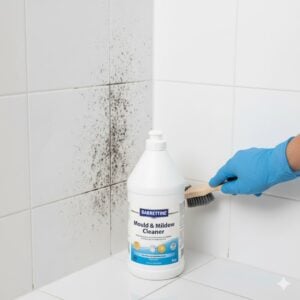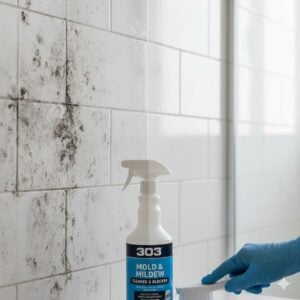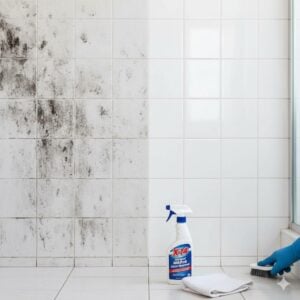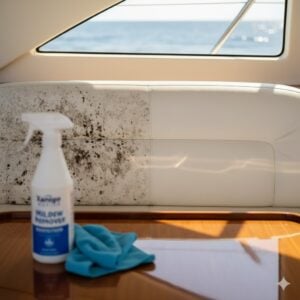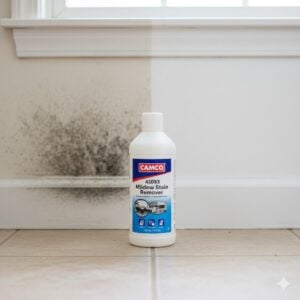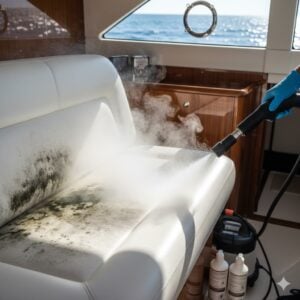Welcome to a fresh dive into the world of indoor health – today, we’re unraveling the mystery of mold air quality tests. Why is this a big deal? Well, ensuring your living or working space is free from harmful mold spores not only guarantees a safer environment but also protects your health from potential threats. Mold can be sneaky, often hiding out of sight, affecting air quality and causing health issues before you even know it’s there. That’s why mastering mold air quality tests is crucial. Stick around as we share seven game-changing secrets that will elevate your mold detection game to pro levels. Trust us; this is a guide you won’t want to miss.
Table of Contents
Toggle#1: Understanding the Basics
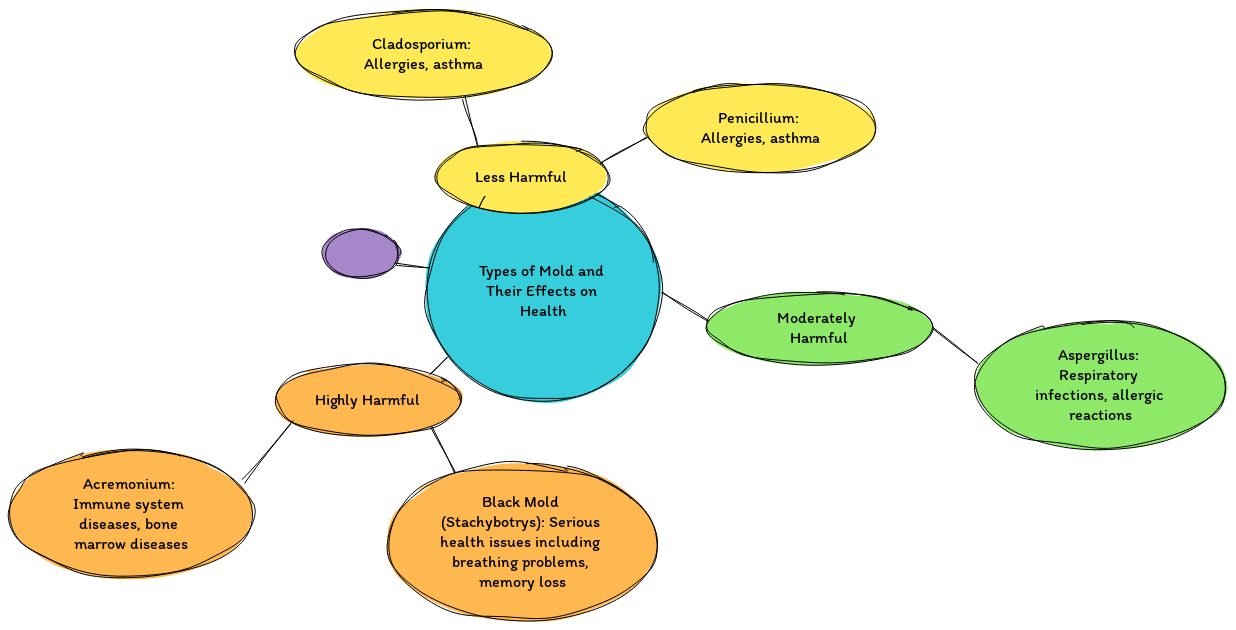
In mastering mold air quality tests, a foundational step is grasping what mold is and its repercussions on air quality. Mold, a type of fungus, thrives in moist environments and can spread by releasing tiny, lightweight spores into the air. These spores are everywhere, indoors and outdoors, and they become a health hazard when they land on wet surfaces and start to grow. As mold grows, it not only damages the surfaces it inhabits but also deteriorates indoor air quality, posing risks to human health.
There are numerous mold species, but not all are harmful. However, certain types, such as Aspergillus, Penicillium, and Stachybotrys (often referred to as black mold), can have severe effects on health, triggering allergies, respiratory issues, and in extreme cases, toxic reactions. Understanding the different types of mold and their potential impact on health is crucial in evaluating the urgency and methods for air quality testing and remediation.
The impact of mold on air quality hinges on the concentration of mold spores in the air. A low concentration might not pose an immediate health risk to the general population, but high concentrations, especially of toxic mold species, can lead to significant health issues. People with allergies, asthma, or immune suppression are particularly susceptible to the effects of mold spores.
For those looking to delve into mold air quality tests, recognizing the visual and olfactory signs of mold presence is a vital skill. Mold can often be identified by its musty odor and appearance, ranging from black, green, orange, to purple splotches on affected surfaces. However, not all mold is easily visible or detectable by smell, which is where air quality testing becomes essential.
In sum, understanding the basics of mold—its varieties, how it spreads, its impact on air quality, and health risks—lays the groundwork for effective air quality testing. This knowledge not only aids in identifying when and where mold might be a problem but also in determining the most appropriate course of action to maintain a healthy indoor environment.
#2: The Right Tools for the Job
Choosing the right tools for conducting mold air quality tests is critical in obtaining accurate and reliable results. There’s a spectrum of tools available, ranging from simple DIY kits to sophisticated professional equipment. Each has its own place in the testing process, depending on the complexity of the situation and the level of detail needed in the results.
DIY mold test kits are the first line of defense for homeowners suspecting mold growth. These kits typically include petri dishes that are left exposed to the air for a certain period, then sealed and allowed to incubate. After a few days, any mold spores that were in the air will grow, providing a visual indication of mold presence. While these kits can alert homeowners to a potential mold issue, they often lack the specificity to identify the mold type or spore concentration. Their main advantage lies in their affordability and accessibility, offering a preliminary glance at indoor air quality.
For a more comprehensive analysis, professional-grade air sampling pumps and spore traps are utilized. These devices capture air samples over a specified period, trapping mold spores on a microscopic slide or culture medium. The samples are then sent to a laboratory for detailed analysis, identifying not only the presence of mold but also specifying the species and spore concentration. This level of detail is invaluable for assessing the severity of a mold problem and formulating an effective remediation strategy.
Digital hygrometers and moisture meters also play a pivotal role in mold air quality testing. By measuring the humidity levels and moisture content in walls, floors, and ceilings, these tools help pinpoint potential mold growth areas, guiding targeted testing and remediation efforts.
In essence, selecting the right tools for mold air quality testing hinges on the specific requirements of the situation. While DIY kits offer a good starting point for homeowners, professional testing provides the accuracy and detail necessary for thorough mold assessment and remediation planning. Knowing which tools to use and when to escalate testing efforts is key to effectively managing indoor mold levels and ensuring a healthy living environment.
#3: Identifying the Hotspots
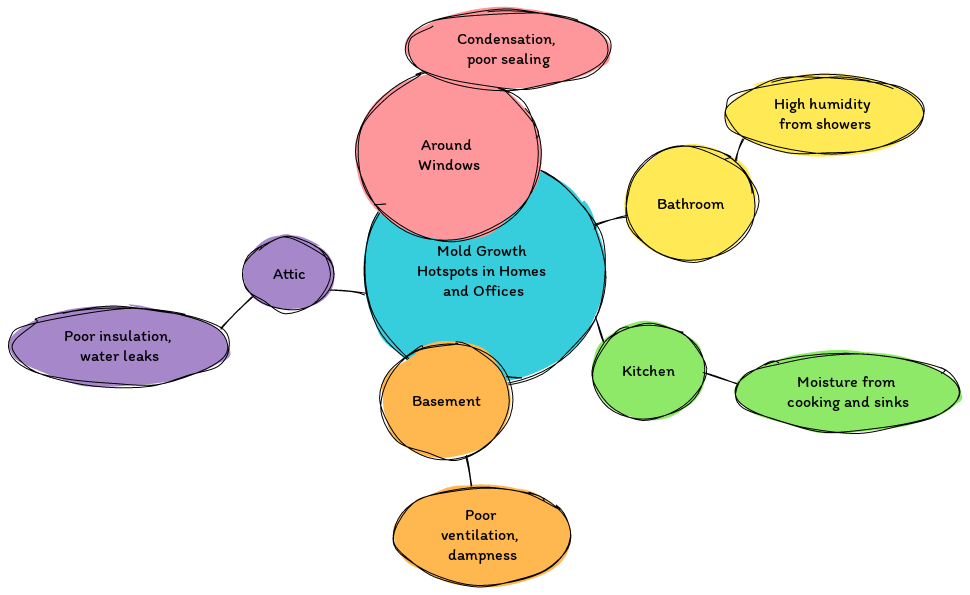
Identifying hotspots where mold is most likely to grow is a critical step in mastering mold air quality tests. Mold thrives in moist, warm, and poorly ventilated areas, making certain spots in any home or office prime targets for mold colonization. Knowing where to look can save time and ensure that your air quality tests are both efficient and effective.
The most common mold hotspots include bathrooms and kitchens, where water usage is frequent and humidity levels are higher. These areas often have poor ventilation, providing the perfect environment for mold to flourish. Look for signs of mold around sinks, bathtubs, showers, toilets, and anywhere leaks may occur. In kitchens, check under sinks, behind appliances, and around windows.
Basements and crawl spaces are also notorious for mold growth due to their high humidity levels and lack of adequate airflow. Look for signs of water damage or leaks, as these are telltale indicators that mold could be present. Storage areas where cardboard and paper are kept can also become mold hotspots if they become damp and are not properly ventilated.
Roofs and attics should not be overlooked. Leaks from a damaged roof can lead to mold growth on insulation, wood, and other materials found in attics. Ensure that your attic has proper ventilation and check regularly for water damage or leaks.
Another critical area to monitor is the HVAC system, including air ducts and units. These systems can circulate mold spores throughout a building, significantly affecting indoor air quality. Regular maintenance and inspections of HVAC systems are essential to prevent mold growth and spread.
Windows where condensation accumulates provide another common area for mold growth. The combination of moisture and dust creates an ideal environment for mold spores to settle and multiply. Regularly cleaning window sills and ensuring windows are properly sealed can help prevent mold growth.
By focusing on these hotspots, individuals can more effectively conduct mold air quality tests, ensuring they’re addressing potential problem areas and maintaining a healthier indoor environment.
#4: Timing Is Everything
Timing is crucial when it comes to conducting mold air quality tests. The goal is to choose a moment that gives the most accurate reflection of the indoor air environment, without external factors skewing the results. Several aspects influence the ideal timing for these tests, from weather conditions to the building’s occupancy and usage patterns.
Firstly, consider the weather. High humidity levels can temporarily increase the amount of moisture in the air, encouraging mold growth. Conducting tests during or immediately after rainy seasons or days might show elevated spore counts that are not reflective of the typical indoor air quality. Therefore, choosing a relatively dry period for testing can provide a more accurate baseline of mold spore levels in the air.
Seasonal changes also play a role. Mold growth can accelerate in warmer months due to increased humidity. Testing during different seasons can help you understand how mold spore concentrations fluctuate over the year and identify times when your home or office is most at risk.
The building’s usage and occupancy should also influence timing. For businesses, conducting tests during normal operating hours when HVAC systems are fully operational will give a clear picture of the air quality employees and customers experience daily. In homes, consider testing when the house is occupied as usual, without any recent activities like deep cleaning or painting, which could temporarily impact air quality.
Additionally, if recent water damage has occurred, it’s advisable to wait a period after repairs and remediation efforts have been completed before testing. This allows time for any residual moisture to dissipate and provides a post-remediation baseline for mold levels.
Understanding and optimizing the timing of mold air quality tests can significantly impact the accuracy of your results, ensuring that you’re acting on reliable information to maintain a healthy indoor environment.
#5: Decoding the Data
Decoding the data from mold air quality tests is essential for accurately assessing the indoor environment and determining the appropriate course of action. The results of these tests provide valuable insights into the presence and concentration of mold spores in the air, helping to identify potential mold problems and their severity.
One key aspect of decoding the data is understanding the units of measurement used in mold air quality testing. Typically, mold spore concentrations are measured in spores per cubic meter of air (spores/m³). This measurement allows for standardized comparison across different test results and locations.
Interpreting the data requires comparing the test results to established guidelines or standards for mold spore levels. While there are no universally accepted standards for mold spore concentrations in indoor air, various organizations, such as the Environmental Protection Agency (EPA) and the American Conference of Governmental Industrial Hygienists (ACGIH), have published guidelines based on extensive research and expert consensus.
Another aspect of decoding the data involves considering the types of mold detected during testing. Not all molds are created equal, and some species pose greater health risks than others. Identifying the types of mold present can help prioritize remediation efforts and inform decisions about the best methods for addressing the problem.
In addition to quantitative data on mold spore concentrations, qualitative observations from the testing process can also provide valuable insights. These observations may include visual inspections for mold growth, musty odors indicative of mold presence, and evidence of water damage or moisture issues in the building.
Overall, decoding the data from mold air quality tests requires a comprehensive understanding of measurement units, comparison to established standards, consideration of mold species, and qualitative observations. By carefully analyzing the test results, individuals can gain valuable information about the indoor environment and take appropriate steps to address any mold-related issues.
#6: Prevention Is Key
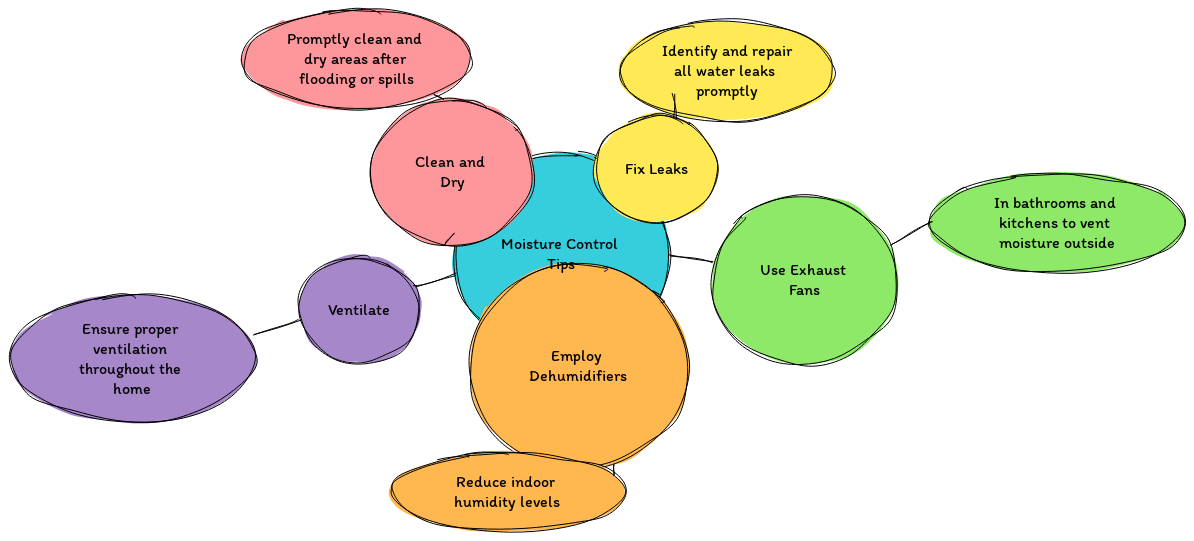
Prevention is indeed the cornerstone of maintaining a mold-free indoor environment. By implementing proactive measures, individuals can significantly reduce the risk of mold growth and ensure healthier air quality within their homes or workplaces.
One of the most effective prevention strategies is moisture control. Since mold thrives in damp environments, it’s crucial to address any sources of moisture promptly. This includes fixing leaks in pipes, roofs, or windows, as well as properly ventilating areas prone to high humidity, such as bathrooms and kitchens. Installing exhaust fans and using dehumidifiers can help keep moisture levels in check.
Regular cleaning and maintenance also play a vital role in mold prevention. Dust and dirt provide nutrients for mold growth, so keeping indoor spaces clean and clutter-free can help deter mold from taking hold. Pay special attention to areas that are often overlooked, such as behind furniture, inside closets, and beneath sinks.
Proper ventilation is essential for maintaining good indoor air quality and preventing mold growth. Ensure that ventilation systems, including HVAC units and air ducts, are clean and functioning correctly. Consider investing in high-quality air filters and changing them regularly to trap mold spores and other airborne contaminants.
Addressing outdoor sources of mold can also contribute to prevention efforts. Keep gutters clean and free of debris to prevent water from pooling around the foundation of the building. Trim vegetation away from the exterior walls to improve airflow and reduce moisture buildup.
Educating occupants about mold prevention and encouraging them to report any signs of moisture or mold growth promptly can help create a proactive culture of mold prevention within the home or workplace. By taking these preventive measures seriously, individuals can minimize the risk of mold-related issues and maintain a healthier indoor environment for themselves and others.
#7: When to Call in the Pros
Knowing when to call in the professionals for mold-related issues is crucial to ensure timely and effective remediation. While some minor mold problems can be addressed with DIY methods, certain situations warrant the expertise of trained professionals.
One key indicator that it’s time to call in the pros is extensive mold growth. If mold covers a large area, typically more than 10 square feet, or if it has spread to hidden or hard-to-reach areas, professional remediation is often necessary. Attempting to tackle such extensive mold growth without the proper equipment and expertise can be ineffective and potentially hazardous to health.
Persistent moisture problems, such as recurring leaks or chronic humidity issues, also warrant professional attention. These underlying moisture issues need to be addressed to prevent future mold growth effectively. Professionals can identify the source of the moisture problem and implement solutions to prevent mold recurrence.
Individuals with compromised immune systems, respiratory conditions, or allergies may be more susceptible to the adverse effects of mold exposure. If occupants experience persistent health symptoms, such as coughing, wheezing, or skin irritation, that seem to be related to mold, it’s essential to seek professional help. Mold remediation experts can assess the indoor environment, identify potential mold sources, and implement strategies to improve air quality and reduce health risks.
Additionally, if mold contamination is suspected in HVAC systems or ductwork, it’s best to consult professionals. Mold growth in these areas can spread mold spores throughout the building, exacerbating indoor air quality issues. Trained technicians have the tools and knowledge to properly clean and sanitize HVAC systems to prevent further contamination.
Overall, if in doubt about the severity of a mold problem or if DIY efforts have proven ineffective, it’s best to err on the side of caution and consult with professionals. Mold remediation experts can provide thorough assessments, tailored solutions, and peace of mind that the problem is being addressed effectively and safely.
Why Bio On Is Your Go-To Solution Mold Air Quality Tests
Bio-On is your ultimate mold solution because we offer comprehensive services tailored to your needs. With our expertise in mold remediation, death cleanup, fire damage cleanup, odor removal, deep cleaning, and hoarding cleaning, we address all aspects of mold-related issues efficiently and effectively. Our team of professionals is highly trained and equipped with advanced tools and techniques to handle any mold problem, big or small. We prioritize your health and safety, ensuring thorough inspections, precise remediation, and prevention strategies to maintain a mold-free environment. Trust Bio-On for reliable, prompt, and top-quality mold solutions that give you peace of mind.
Conclusion
In conclusion, mastering mold air quality testing is essential for maintaining a healthy indoor environment. By understanding the basics of mold, utilizing the right tools, identifying hotspots, timing tests appropriately, decoding the data accurately, implementing preventive measures, and knowing when to seek professional help, individuals can effectively manage mold-related issues. Trust Bio-On for comprehensive mold solutions tailored to your needs. Contact us now via WhatsApp for a free consultation with our expert team. Let us help you breathe easier and ensure a safer, mold-free environment for you and your loved ones.








